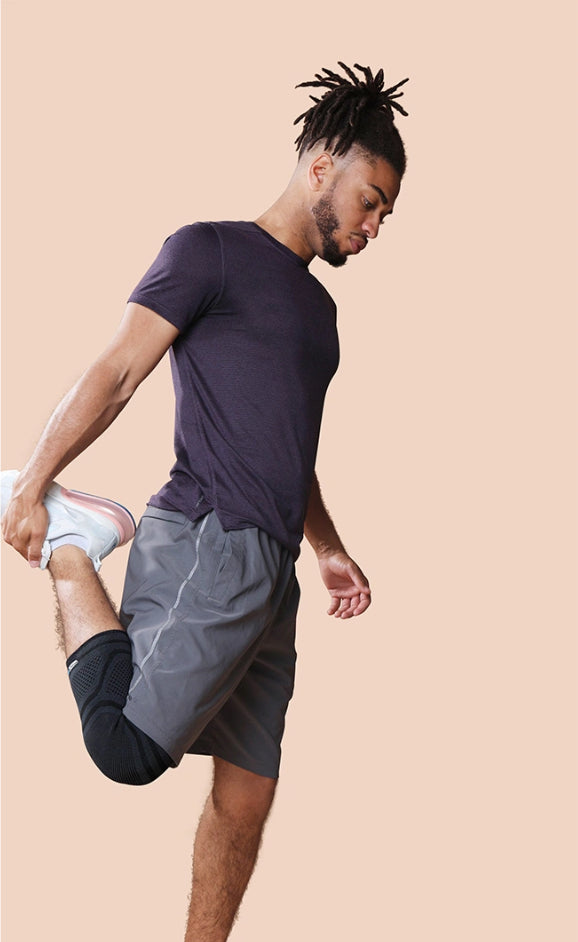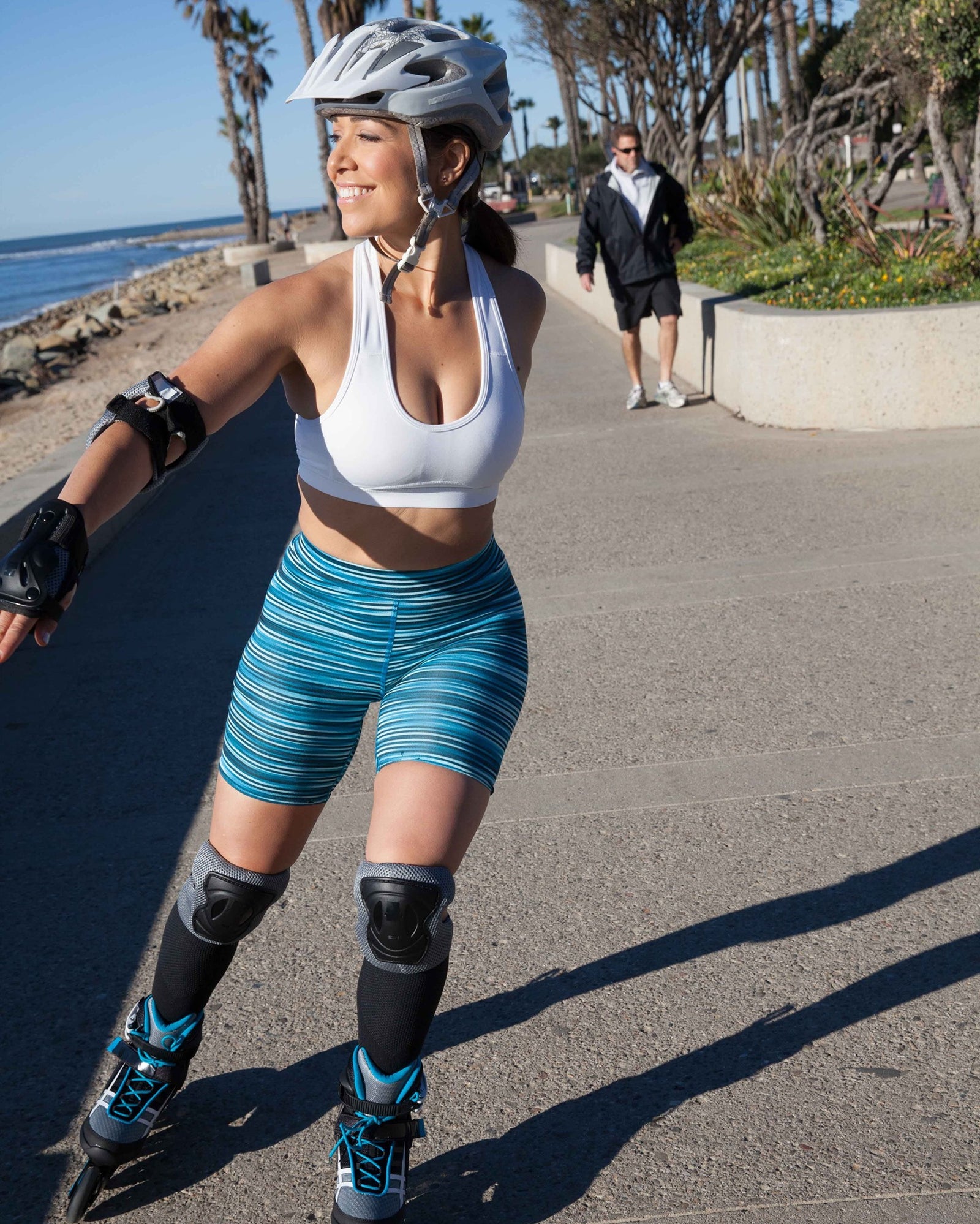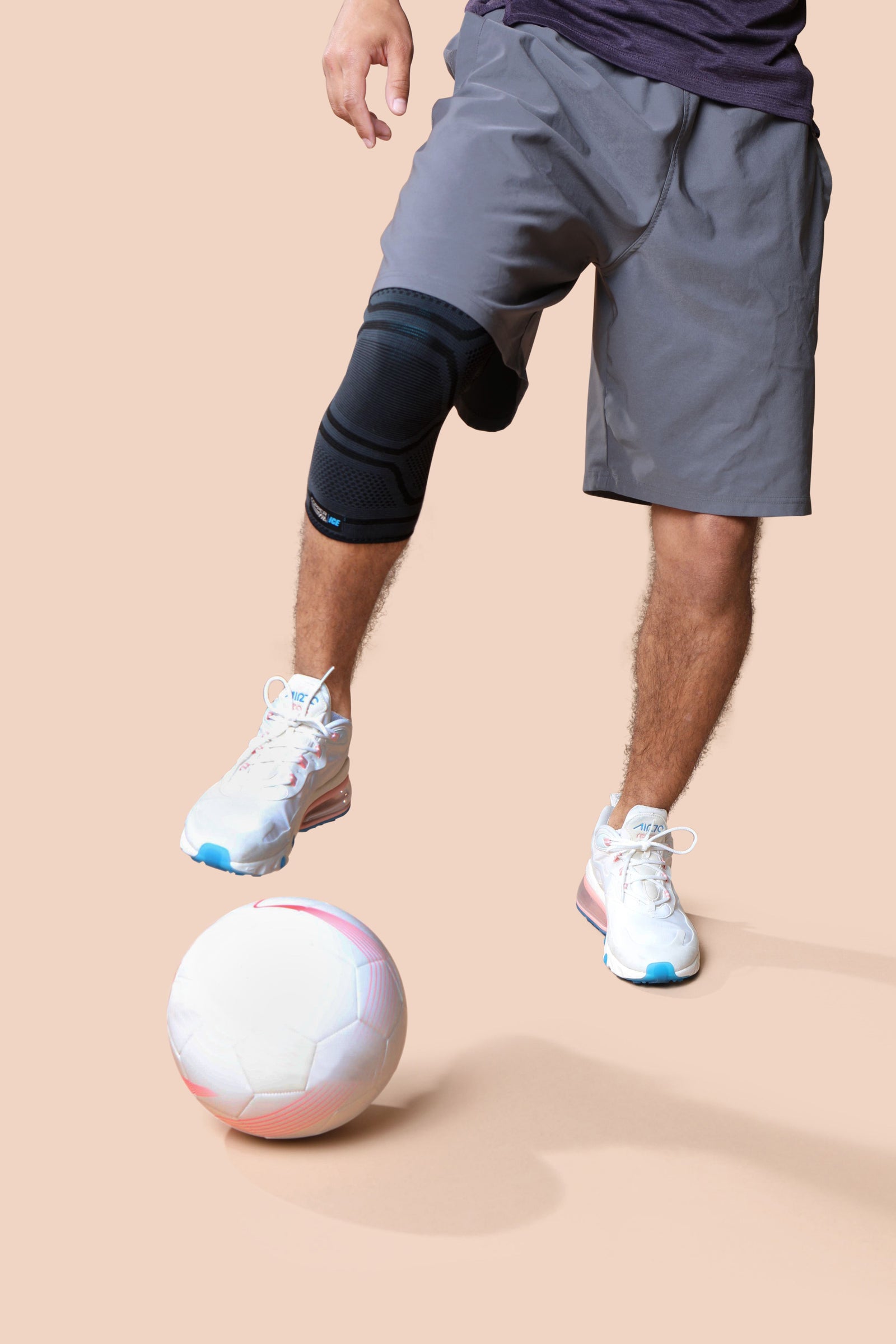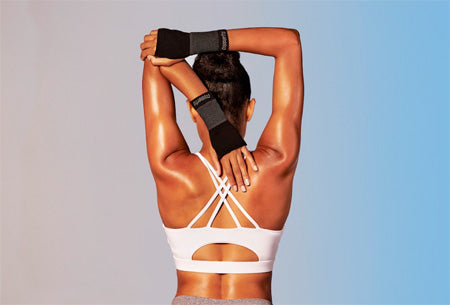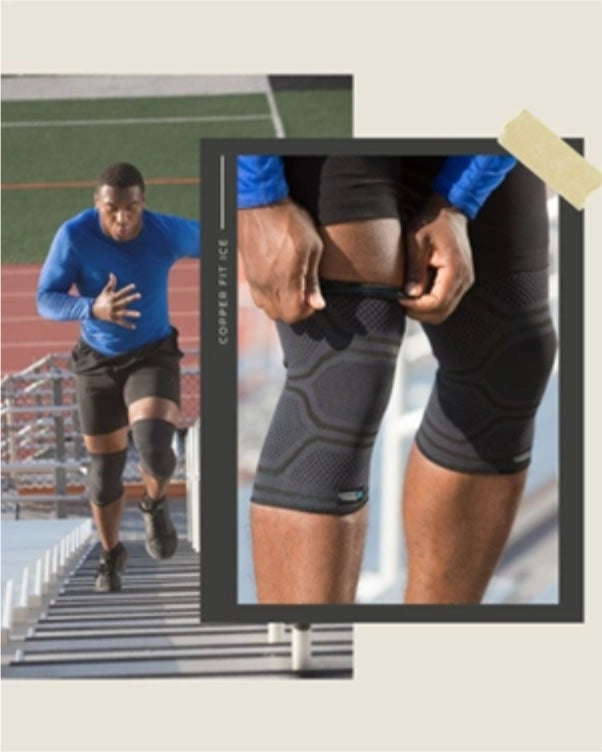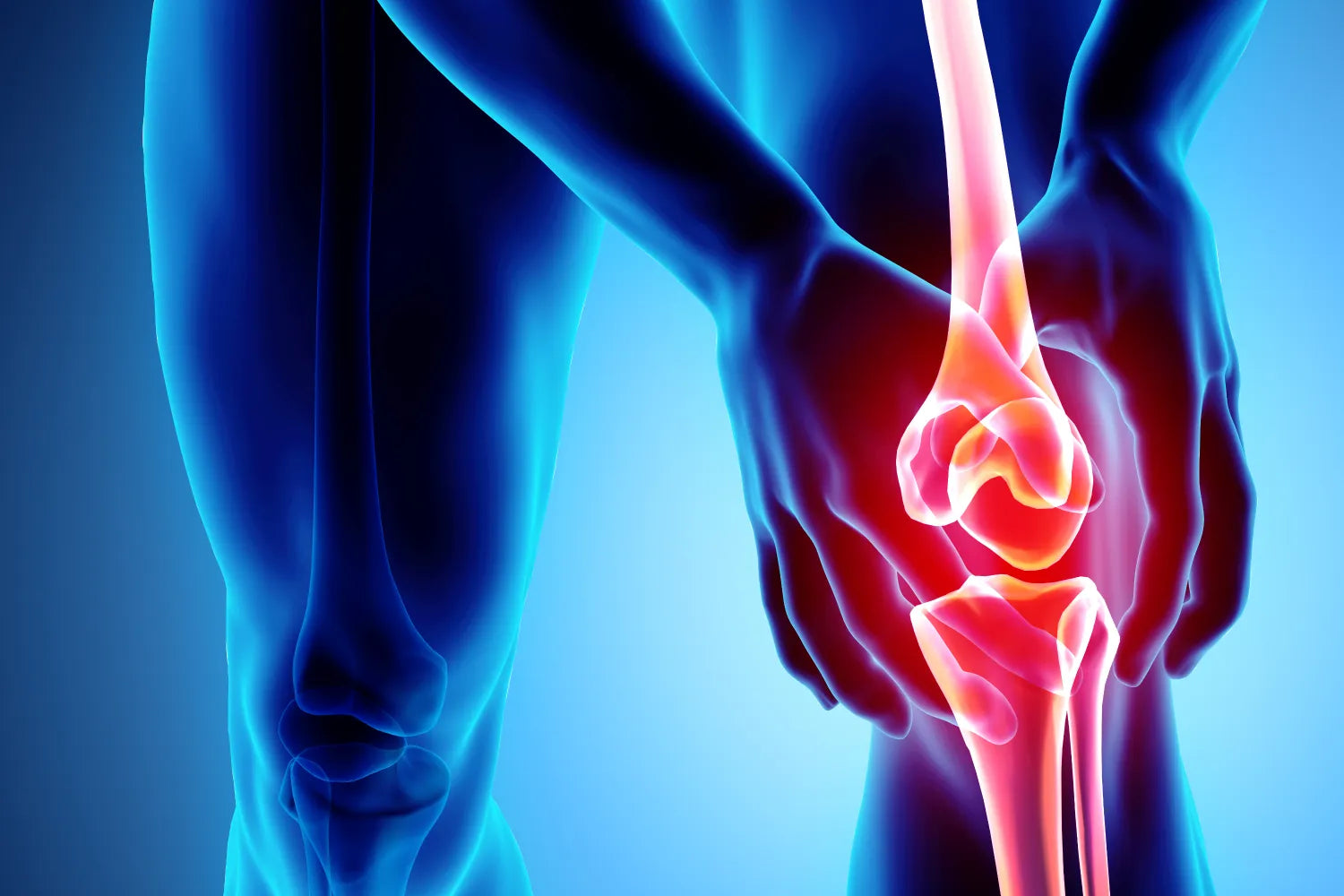
Key Takeaways
- Jumper's knee causes soreness just below the kneecap, especially after jumping, squatting, or running.
- Understanding symptoms and adding the right stretches and recovery habits can help support performance.
- Strengthening surrounding muscles and practicing active recovery can help promote comfort and mobility.
Whether you’re an athlete, a weekend runner, or just getting back into movement, knee soreness can get in the way of progress. One of the most common sources of that discomfort is jumper’s knee, which is a type of tension that shows up just below the kneecap, often after repetitive movement like jumping, squatting, or sprinting.
Jumper’s knee is something many active adults experience, and while it can be frustrating, it’s also manageable. With the right knowledge and a supportive recovery routine, you can help ease the tension and keep your body moving strong.
What Is Jumper’s Knee?
Jumper's knee is a term used to describe soreness and tension in the patellar tendon. Unlike injuries that come from a fall or sudden twist, jumper’s knee tends to develop over time, usually as a result of repeated stress or high-impact movement.
This condition is common among athletes and active adults who spend a lot of time jumping, sprinting, or loading the knee joint with intensity. But it can also affect people who are just getting started with movement, especially if there’s a sudden increase in activity or tightness in the surrounding muscles.
If you're noticing discomfort at the front of your knee after working out, walking stairs, or even standing for long periods, you might be dealing with jumper’s knee. The good news is that this kind of soreness usually responds well to recovery routines that prioritize mobility, support, and strengthening. With the right approach, you can help your body rebound and stay strong.
What Are the Symptoms of Jumper's Knee?
The most common symptom of jumper's knee is a feeling of soreness or tightness just below the kneecap. This area may feel tender to the touch or become more noticeable when you're active. Some people notice the discomfort during a workout, while others feel it more after they've cooled down.
You might experience:
- A dull ache in the front of the knee
- Discomfort that increases during jumping, running, or squatting
- Stiffness when bending or kneeling
- Occasional weakness or tension when trying to straighten your leg
These sensations can range from mild to more intense, and they tend to develop gradually. If you ignore them, they may become more noticeable over time. But if you catch the early signs and respond with thoughtful support, like stretching, recovery routines, and strengthening, you can help ease that tension and get back to moving comfortably.
Where Does Jumper's Knee Hurt?
The discomfort associated with jumper's knee is centered below the kneecap, where the patellar tendon attaches to the front of the shinbone. It can feel like a pinpoint of soreness or a more general ache that lingers after activity. Some people may also feel tension in the quadriceps (the muscle above the knee) or even some tightness around the lower thigh or upper shin.
Certain positions can make it more noticeable, like going up or down stairs, kneeling, or squatting. You may also feel a sense of stiffness when getting up from sitting for a while. If any of these sensations sound familiar, your body may be asking for a recovery routine that helps loosen surrounding muscles and support the knee joint.
What Are the Most Common Causes of Jumper's Knee?
Jumper’s knee doesn’t usually happen overnight. It often develops due to overuse, tightness, or imbalances in the muscles around the knee.
Some of the most common causes include:
- Repetitive impact from jumping, sprinting, or high-intensity movement
- Tight quadriceps or hamstrings that increase tension on the tendon
- Weakness in supporting muscles, including the glutes and calves
- Poor mechanics, such as landing hard or leaning too far forward during squats
- Sudden increase in training intensity or frequency
Lifestyle can also play a role. Sitting for long periods, lack of stretching, and not allowing enough recovery between workouts can all contribute. That’s why it’s so important to take a balanced approach to activity that includes movement, rest, and targeted support.
What Are the Best Stretches for Jumper’s Knee Relief?
Stretching is an essential part of supporting your knees, especially if you’re active or starting a new workout routine. Regular stretching helps support mobility, encourages healthy blood flow, and promotes muscle relaxation around the joint. The goal is to gently release tension in the muscles that surround the knee and contribute to strain.
Here are a few stretches that can help:
1. Standing Quad Stretch
Stand on one leg, bend the other knee, and bring your heel toward your glutes. Grab your ankle and gently pull until you feel a stretch in the front of your thigh. Keep your knees close together and your core engaged.
2. Hamstring Stretch
While standing opposite a chair, extend one leg out in front of you and place your heel on the seat of the chair, then hinge forward slightly at the hips. You should feel a stretch through the back of your thigh.
3. Calf Stretch at the Wall
Place your hands against a wall with one foot forward and one foot back. Keep both heels on the ground and lean into the stretch until you feel it in your back calf.
4. Hip Flexor Stretch (Low Lunge)
Step one foot forward into a lunge position, keeping your back knee on the ground. Shift your weight forward slightly until you feel a stretch in the front of your hip.
Hold each stretch for 20 to 30 seconds and repeat as needed. It’s best to stretch when your muscles are warm to support mobility and comfort.
Recovery Tips To Support Knee Comfort and Mobility
Recovery is just as important as movement. When your muscles and joints feel sore, it's a signal that your body needs support.
Here are a few habits that can make a difference:
- Alternate hot and cold therapy: Cold can help when soreness is new or after activity. Heat may help loosen up stiffness or ease lingering tension from previous days.
- Use gentle compression: Compression sleeves and socks can help support healthy circulation and provide extra stability when you’re moving.
- Hydrate and refuel: Staying hydrated and eating balanced meals (especially with protein) can support muscle repair.
- Get enough rest: Sleep is when your body does the bulk of its recovery. Prioritize seven to nine hours a night when possible.
- Move mindfully: You don’t have to stop moving, but it’s important to modify activities that increase tension. Opt for lower-impact options and gradually work back up.
With the right balance of recovery and movement, you can help your body stay strong and active.
FAQs
What can jumper's knee be mistaken for?
Jumper's knee can be mistaken for other conditions, such as patellofemoral pain syndrome (PFPS), patellar tendonitis, or quadriceps tendinopathy. A physical examination, careful medical history review, and diagnostic tests can help differentiate between these conditions.
What is the difference between Osgood-Schlatters and jumper's knee?
Osgood-Schlatter disease and jumper's knee (patellar tendinitis) differ in their causes, affected areas, and typical age groups. Osgood-Schlatter is an overuse injury affecting the tibial tuberosity (a bony prominence below the kneecap) during growth spurts, while jumper's knee is typically an overuse injury of the patellar tendon itself, more common in older athletes.
Does walking help with jumper’s knees?
While many people can continue doing regular physical activities such as walking and climbing stairs, recovery can be slow. Daily stretching and strength exercises that can improve your range of motion are essential to recovering fully.
The Bottom Line
At Copper Fit, we believe everyone deserves to feel good in their body and move with confidence. We know how frustrating it can be when discomfort slows you down, especially when you're doing your best to stay active.
Jumper’s knee might feel like a setback, but with the right information, support, and recovery habits, you can stay on track and keep moving forward. You don’t have to push through discomfort alone. Supporting your body is a sign of strength, not weakness.
We’re here to empower you with tools and knowledge that help soothe tension, promote recovery, and support the active life you deserve.
Sources:
Patellar Tendonitis (Jumper's Knee) | Johns Hopkins Medicine
The Best Stretches and Exercises for Patellar Tendonitis | Cleveland Clinic

